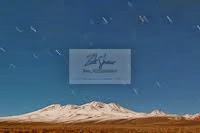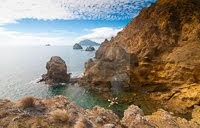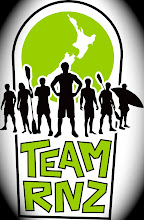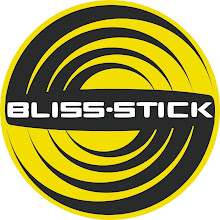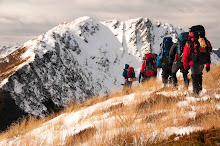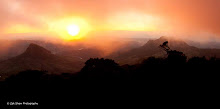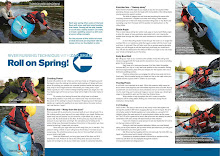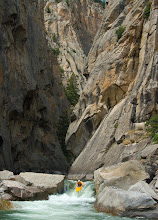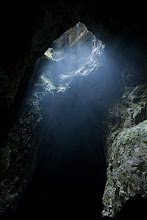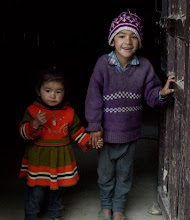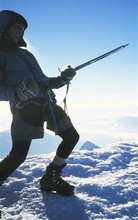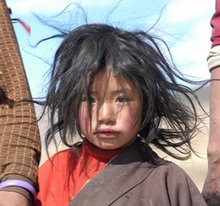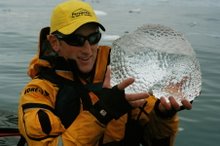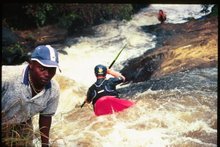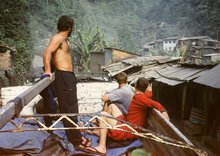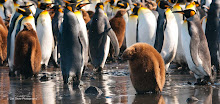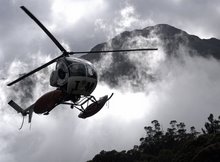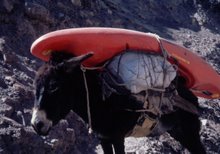A great mixture of amazing whitewater, isolation and mountain to lowland jungle environment variation makes the Paucartambo journey an absolute classic.
Paucartambo – 3000m, Put in = 2800m (guess), Take out - Penetracion – 600m (guess)
River km – 150 (ish)
Here is how we found it.
We left Cusco after market shopping and drove for five hours to attempt a descent of Peru’s premier multiday whitewater kayak run. Hernando our heckling taxi driver didn’t really know what sort of a day he had signed up for, but then neither did we.
The drive to the town of Paucartambo and onward to the Puente (bridge) Pilco took longer than expected before Hernando turned and drove back to Cusco in the rain and darkness.

Paucartambo market colors - Image Zak Shaw
Travelling as light as possible we were without a stove and sturdy shelter. As the rain fell and we looked for dry ground under trees it felt like an ominous beginning.An hour later our luck changed when a family accepted our request for shelter and took us in.Using their fire our night passed under their slapped together shack.

Our hospitable family - Image Zak Shaw
Peruvian music blared late into the night, dogs barked, chickens pecked our kayaks and at 5am the roosters started but we were dry and ready to start early!
In their kitchen we forced down oatmeal (my least favourite food, but its light, so...) before sliding into the river at 8.30am.

Team shot before we hit the river . Image Zak Shaw

Justin Venable probes into the entrance rapids of Orange Canyon. Image - Zak Shaw
Alpine melt water flowing from the summit slopes of Nevado Auzangate (6372m) carried us for 7.5 hours on day one and at a guess we paddled 40km. The action slowly built throughout the day. Orange Canyon named so becuase of its distinctive orange polished boulders held some standout class 4+ kayaking.

This 3m falls was one of the best clean falls in Orang canyon - Image Justin Venable.
JV and I moved quickly reading and running rapids all day and passed under the bridge of Sahuay shortly before 4pm. A slightly overhanging boulder 500m past the bridge became camp and before dark at 5.30pm we had rigged our plastic tarp and gathered a huge pile of driftwood. An up-valley breeze was blocked off by building a stone wall. As the light faded the sky darkened as storm clouds moved into position above us. Rain tested our shelter and attempted to extinguish our method of cooking. With hot soup in pot we waited the passing of the rain and by 8pm were eating dinner outside.
Dinner = Mushroom soup, rice, lentils, oregano, veg stock, cilantro.

Camp one below the Sahuay Bridge. Image Zak Shaw
Our last seen weather forecast for the region had indicated a big front approaching bringing more rain. From our reading we knew the lower gorges contained must run whitewater, portages and vertical walls so our plan was to try and push through the committing sections in the first three days. This would require big days and efficient travel.

Cool canyon - Image - Zak Shaw.
On day two we began at 8am and paddled for 6.5 hours. The river dropped into a series of bedrock gorges but rarely held more than rapids above class 4. As a small team of two we watched each other close and pushed as far as possible into rapids to get the information we needed without having to get out and look.

Image - Zak Shaw
The vegetation had started to transform and beside the river were crazy trees that I called ghost trees. Their small limbs covered in a white feather like cloth that waved aroud in the breeze. They looked quite spooky.
Mid afternoon we stopped to meet a family processing the coffee beans growing on their river side property. Initially we though the operation consisted of one solitary man but his family soon gathered and all told numbered around fifteen. We were given fruit (Chireimoya). JV and I didn’t appreciate the gift as much as we should have as we exchanged looks concerened more about the weight of our already laden kayaks. Later that night I felt bad about my lack of reaction.

Coffee processing, how do they get the beans to the market...
Our camp for the night of day two was on a massive sand beach on river right. Again we ate well and a warm breeze rolling up from the jungle dried all our gear.
JV suggested we eat our heavy fruit. It turned out to be the best fruit we’ve tasted. Chireimoya chopped up combined with Manjar – caramelised condensed milk and shaved chocolate sealed the deal on a super day! High living in camp 2!

Image - Zak Shaw
Our third day was expected to be the crux. We knew we were camped above a long steep section that dropped at 50m/km and the commiting gorges were within reach. We put on the water at 7.45am after a 5.45am wake up and immediately encountered class five whitewater which pushed us around. I got shoved offline and tailstood out of control by a large hole. My kayak finally levelled out enough for me to see the next move and we charged right above a horizon.

Image - Justin Venable.
A short portage on mid-stream boulders linked us back into more big water moves avoiding holes. The gradient gradually backed off to class four and the rapids became more dispersed. After 2.5 hours of great kayaking we arrived at the rivers most famed portage.

Image Zak Shaw - Justin Venable must move high above a section of class 6 whitewater to the safety of runnable whitewater below.
It was much easier than expected and we climbed over boulders a short distance on river right before paddling the final drop of the portage. 150m downstream the walls stood vertical and landslide rubble choked the gorge creating a crashing steep mess of partial channels and suspect options. We had worked hard to get to this place on the river before the flow-boosting rains and upon inspection knew we would pass without the extra stress of brown charging flood water. Lunch was sultanas, bars, peanuts, dry noodles and biscuits.
We entered the canyon at 12.15 and paddled up onto rocks on river left that sat under a precarious overhanging cliff. We could see most of what we needed to paddle to escape. From mid-stream boulders we easily linked a move down the hard left of the flow with a few small drops before the rapids flattened and the job was done.
A real jungle feel had crept into the day with big changes in vegetation and small hot water creeks entering the river. We paddled another two hours on the look out for a bathable hot pool before choosing a camp on a spread out gravel bar.

Image - Justin Venable
Day four – “Leisurely start” We started much later on our fourth day knowing that if the rains came it would only speed our cause. Light showers had passed in the night and by 9am the sun shone through low cloud. Late morning we paddled parts of a gigantic landslide rapid. Littered with horrendous hydraulics we walked the first 100m before having a go at the fast paced action below. Easy whitewater followed for the rest of the day. At 1pm the skies opened and the predicted frontal system hit. It felt normal to paddle in the jungle in a heavy rain storm! Lush jungle plants absorbed the moisture easily and the whitewater returned. As the rain pelted down our final hour hour on the river was amongst cool wave strewn rapids and mist. The rain extinguished our ideas of finding dry wood or a protected camp so at 3.30pm we climbed a bank below the swinging footbridge of Penetracion. At the school we met a father and son who confimed where we were (we had no idea really) They sat on top of sacks full of coffee beans ready for transport out of the valley. In the small town we found chicken and beer! Up until our arrival in Pentracion we hadn’t really heard the word ‘tranquillo’ used much and it wasn’t a surprise to see nothing really happened there. We were in the jungle and were therefore on jungle time which happens later! A local helped us find a bed in a shed, which we shared surrounded by tools. The village was friendly but full of trash and drunk locals. Poor people living in make-shift boarded shacks. The place we were staying was run by Gerrado who also worked a restaurant/bar and we ate dinner with him and his boy Kevin. It was great to get out of wet gear finally and once again the soup was top end.

Penetracion - Patience required, home to great locally grown coffee, friendly locals and a mucho tranquillo vibe.
Day five
Our breakfast joint was full of drunks who although not aggressive fell off their chairs and staggered about. The morning coffee was great and we secured a big feed of huevos, arroz and papas fritas. Every person we met offered different advice and alternative solutions to us as to how to go about leaving the valley.
Our predicament was that we had 40-50km of mostly flatwater river between us and the Rio Urrubamba confluence. From there we had planned on catching the dugout river taxi upriver to the road termination before linking with trucks to get back to Quillabamba. But being a Friday we expected to have a wait of at least two full days whilst being eaten by bugs until the river taxi arrived at 5am on Monday. This would be followed by a 2.5 hour boat ride, a ten hour truck leg and a 3.5 hour van segment before we could say we were close to Cola de Mono.
On a Friday morning we sat and waited for a truck. Without a detailed map and broken spanish we had no real idea of place names around us and what route exactly we needed to take. At 12 we finally convinced a truckie to take us to San Martin which we thought was onroute to Quillabamba eight hours away.

Image - Zak Shaw
As it turned out San Martin is not on route and cost us five hours, one hours drive and four hours waiting to go back the way we had come! All said the same truck did deliver us to Quillabamba at 11pm that night.

Image - Justin Venable.
On the streets we ate a great meal from a roadside stall and carried our gear to a taxi stand. Expecting things to work more in our favour from this point on we parked up and I promtly fell asleep on top on my kayak on the footpath. (Dont tell JV as I was supposed to be watching our gear while he went to look for a ride) At 3.30am the police escourted us out of the “pelegroso” area and loaded our kayaks on the back of their truck. In the main plaza at 4am we met a man who would get us out of town to Santa Maria. We arrived in Cola de Mono at 11.30am in time for lunch and a long afternoon nap!
Mission complete!
Zak Shaw
 lhama's on route to the Apurimac. Image - Zak Shaw
lhama's on route to the Apurimac. Image - Zak Shaw The entrance rapids on the Apurima's lower "Black Canyon"
The entrance rapids on the Apurima's lower "Black Canyon"





















